 All Our Tours
All Our Tours
Written by: Alice Le
Updated date:08/10/2025
Hello, I’m Alice. I’m a passionate travel expert with years of experience exploring Vietnam, Laos, Cambodia, and Thailand. My journeys through these countries have given me a deep appreciation of their landscapes, traditions, and cultures, which I now share through authentic insights and tailored recommendations. With this expertise, I can design trips that perfectly match your expectations and create truly unforgettable journeys. I’m here to guide you toward unique experiences, crafted just for you.
Contents
Planning a trip to Laos? Whether you’re landing in the cultural city of Luang Prabang, the capital Vientiane, or heading south to Pakse and the 4,000 Islands, knowing your airport options will make your journey a whole lot smoother.
Laos is a landlocked country, which means air travel is the most convenient way to enter and move around the country. While its airports are generally small and simple compared to big Southeast Asian hubs like Bangkok or Hanoi, they are functional, tourist-friendly, and strategically located near popular destinations.
Laos currently has four international airports that connect the country to its neighbors:
In addition, there are several domestic airports scattered across the country, mainly serving small towns and adventure destinations.
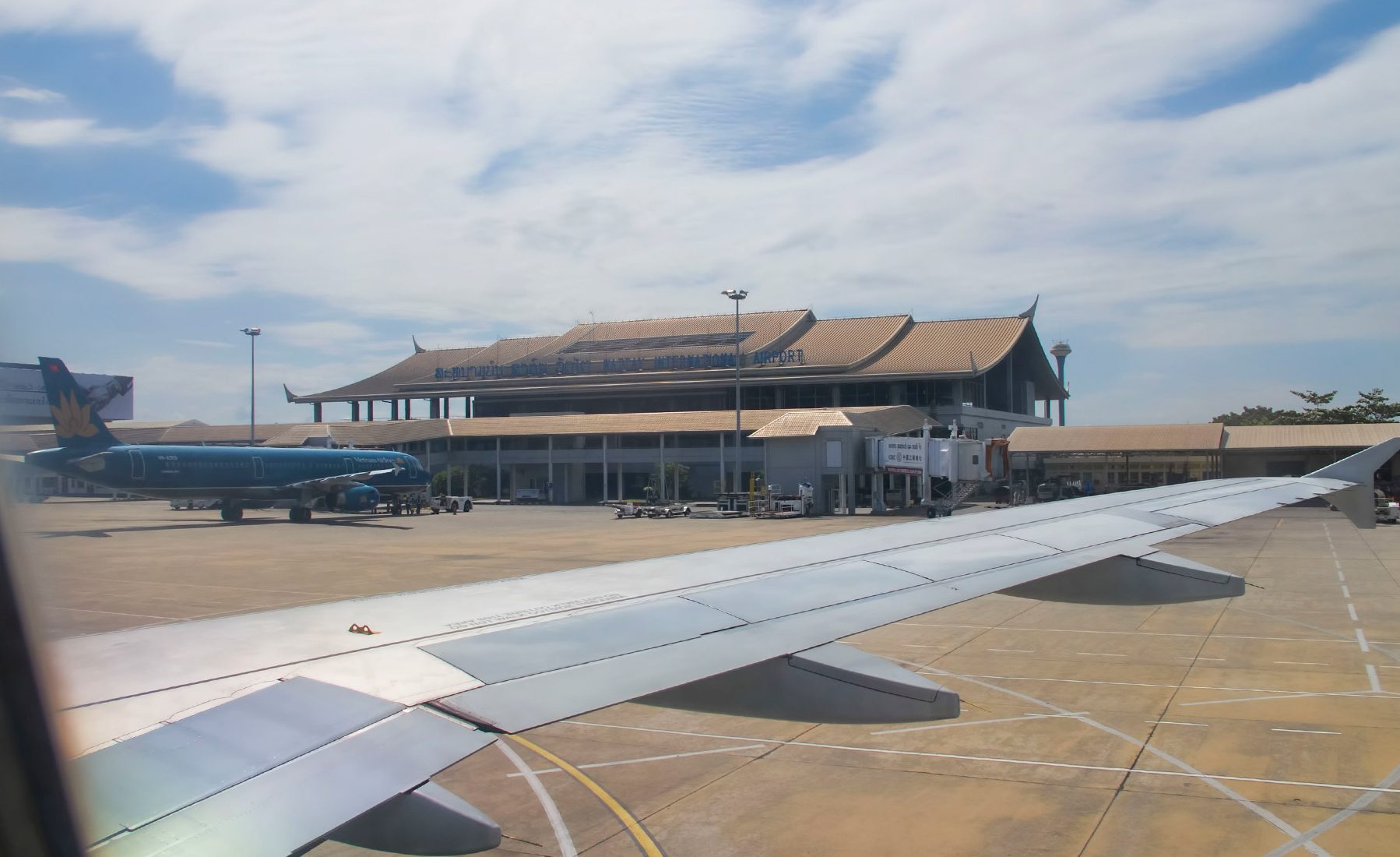
International Airports in Laos
Wattay International Airport (VTE) – Vientiane
Wattay International Airport, the largest and busiest airport in Laos, is conveniently located just 3 km from downtown Vientiane, making it only about a 15-minute taxi ride to the city center. Handling over 1.5 million passengers annually, it serves as the main gateway into Laos and connects the country with key cities across Asia through airlines such as Lao Airlines, Thai Airways, Vietnam Airlines, China Eastern, and AirAsia, with direct flights available to Bangkok, Hanoi, Ho Chi Minh City, Phnom Penh, Kunming, Seoul, and Singapore. Despite being relatively small compared to major regional hubs, the airport offers all the essential facilities travelers need, including visa-on-arrival and e-visa counters for a smooth entry process, ATMs and currency exchange services for convenient financial transactions, as well as local SIM card booths to help visitors stay connected during their trip. For comfort and convenience, passengers can also find duty-free shops, small cafes, and a business lounge within the terminal. Upon arrival, transportation is straightforward, with reliable taxis, tuk-tuks, and private transfers waiting outside to take travelers directly into the city or further to other destinations in Laos.
Best For: First-time visitors, families, and business travelers.
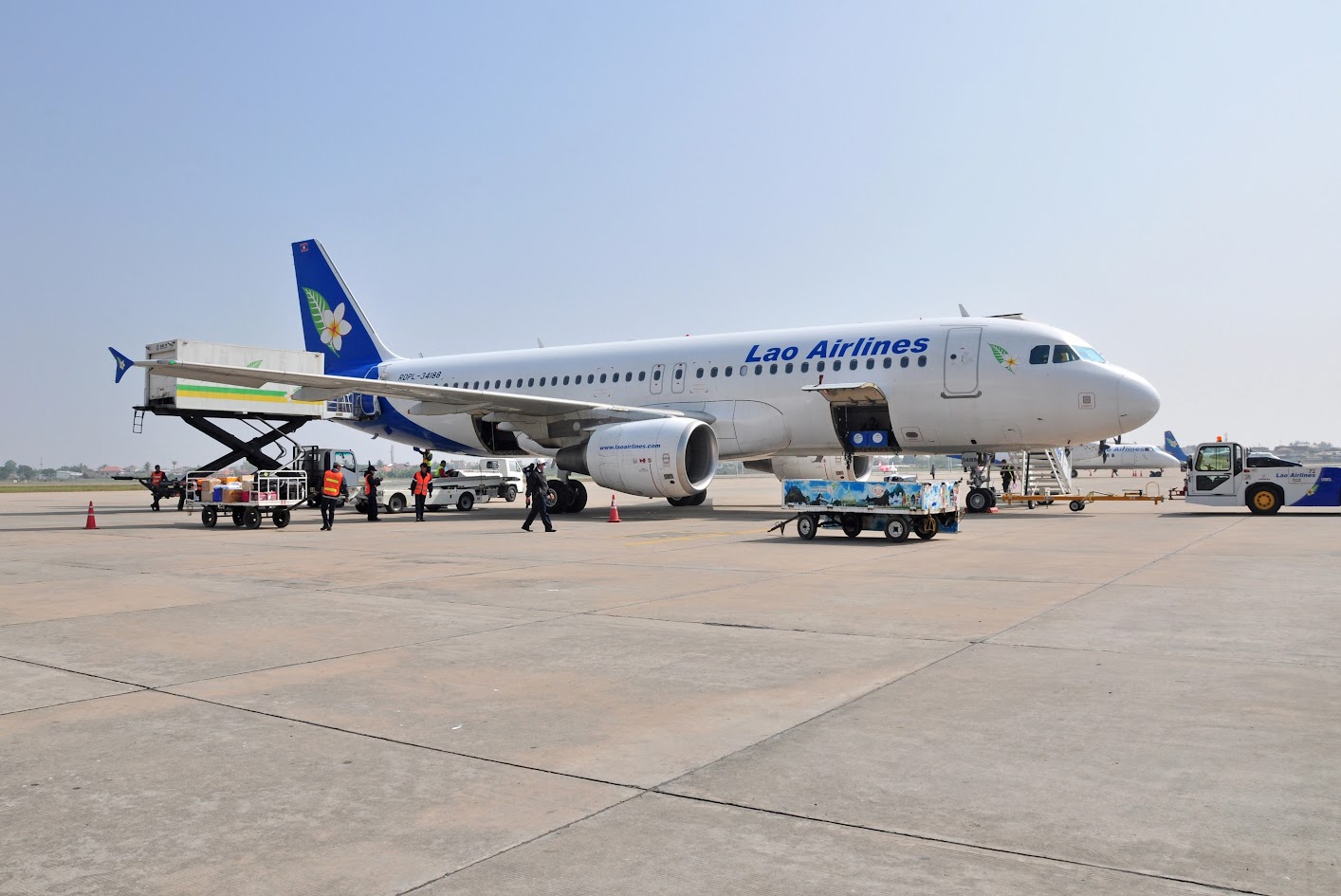
Wattay International Airport (VTE) – Vientiane
Luang Prabang International Airport (LPQ)
Luang Prabang International Airport, the second largest airport in Laos, sits just 4 km from the charming UNESCO World Heritage town of Luang Prabang, making it extremely convenient for travelers eager to explore one of the country’s most iconic cultural destinations. Welcoming around 400,000 passengers annually, the airport is small but modern, with facilities that ensure a smooth and comfortable travel experience. Several regional and seasonal international airlines operate here, offering flights from Bangkok, Chiang Mai, Hanoi, Siem Reap, and Kunming, along with occasional seasonal routes from Singapore, which makes it an accessible entry point for tourists coming from Southeast Asia and beyond. Inside, travelers will find immigration and visa-on-arrival services, basic duty-free shopping, and currency exchange counters, along with a few restaurants, coffee shops, and car rental desks for added convenience. Free Wi-Fi is available, though it can be a bit slow at times.
While the airport may not be large, it is perfectly suited for the type of visitors it attracts, mainly culture-focused travelers, couples on leisure holidays, and those seeking a laid-back entry into Laos. What makes this airport particularly appealing is its proximity to some of Laos’s most celebrated attractions: from the majestic Kuang Si Waterfalls and sacred Pak Ou Caves to the intricate beauty of Wat Xieng Thong and the panoramic sunset views atop Mount Phousi, all within easy reach shortly after landing.
Pakse International Airport (PKZ) – Champasak Province
Pakse International Airport (PKZ), located just 3 km north of Pakse city in Champasak Province, serves as a convenient entry point to southern Laos and functions as a small but important hub connecting the country with Cambodia and Thailand. Though not as busy as Vientiane or Luang Prabang airports, it plays a key role for regional travel, especially for those planning cross-border adventures. The airport is served by Lao Airlines, Vietnam Airlines, and Thai AirAsia, with direct routes to Bangkok, Ho Chi Minh City, and Siem Reap, making it a strategic stop for travelers who want to combine Laos with neighboring countries in a single trip. Facilities are modest but practical, including visa-on-arrival services, a café, currency exchange, a taxi stand, and even motorbike rental options for independent explorers.
Pakse Airport is particularly well-suited for adventure travelers and nature enthusiasts, as it provides the perfect gateway to some of southern Laos’s most remarkable highlights: the lush Bolaven Plateau with its coffee plantations and waterfalls, the serene beauty of Si Phan Don (4,000 Islands) along the Mekong, and Wat Phou, a UNESCO World Heritage-listed Khmer temple complex steeped in history.
Savannakhet International Airport (ZVK)
Savannakhet International Airport (ZVK), situated just 2 km east of Savannakhet town in central Laos, is much smaller in scale, offering only limited flight options. Primarily served by Lao Airlines and Thai Airways, the airport’s main international connection is with Bangkok, making it a practical choice for those traveling between Thailand and central Laos. Its facilities are basic, with immigration counters, a small café, and taxis available, but no luxury lounges or extensive shopping areas. While modest, the airport is adequate for its passenger flow and provides easy access to Savannakhet’s cultural and historical attractions. This airport is best suited for travelers who want to combine central Laos with Thailand in a seamless itinerary. Nearby highlights include the revered That Ing Hang Stupa, traces of colonial French architecture around town, and relaxing Mekong River views—ideal for visitors seeking a quieter, more authentic slice of Laos.
Laos also operates several smaller domestic airports that connect its remote regions to the main hubs of Vientiane and Luang Prabang, significantly reducing travel time across the country’s mountainous terrain
Luang Namtha Airport (LXG)
This airport, about 6 km south of Luang Namtha town, northern Laos was originally built in the 1970s, renovated and reopened in 2008 after major upgrades.
This airport is best known as the entry point to Nam Ha National Protected Area, a UNESCO-listed eco-tourism site famous for trekking, kayaking, and village homestays. Travelers can also explore Luang Namtha town’s vibrant ethnic markets and cycle through surrounding rice fields.
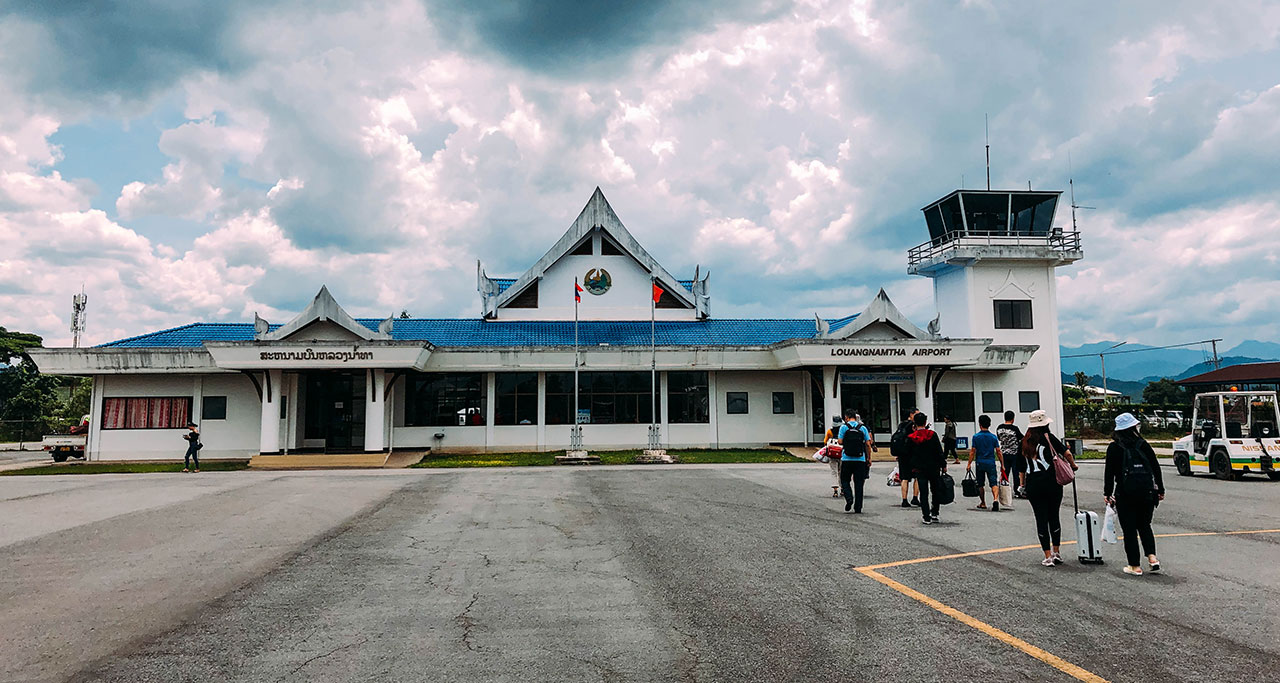
Luang Namtha Airport (LXG)
Xieng Khouang Airport (XKH)
Around 5 km west of Phonsavan town, Xieng Khouang Province, this airport is perfect for travelers heading to the Plain of Jars, a mysterious archaeological site and UNESCO World Heritage Site. Other attractions include Muang Khoun ancient temples, hot springs, and villages showcasing Hmong and Tai Dam cultures.
Oudomxay Airport (ODY)
The airport is about 10 km south of Muang Xay (the provincial capital of Oudomxay)., which was renovated and reopened in 2012 to accommodate regional flights. It’s a gateway to remote northern Laos, it offers access to Chom Ong Cave (one of Southeast Asia’s longest caves), trekking in Phou Hiphi National Protected Area, and ethnic minority villages. Oudomxay is also a key stop for those traveling between Luang Prabang and northern Laos/China.
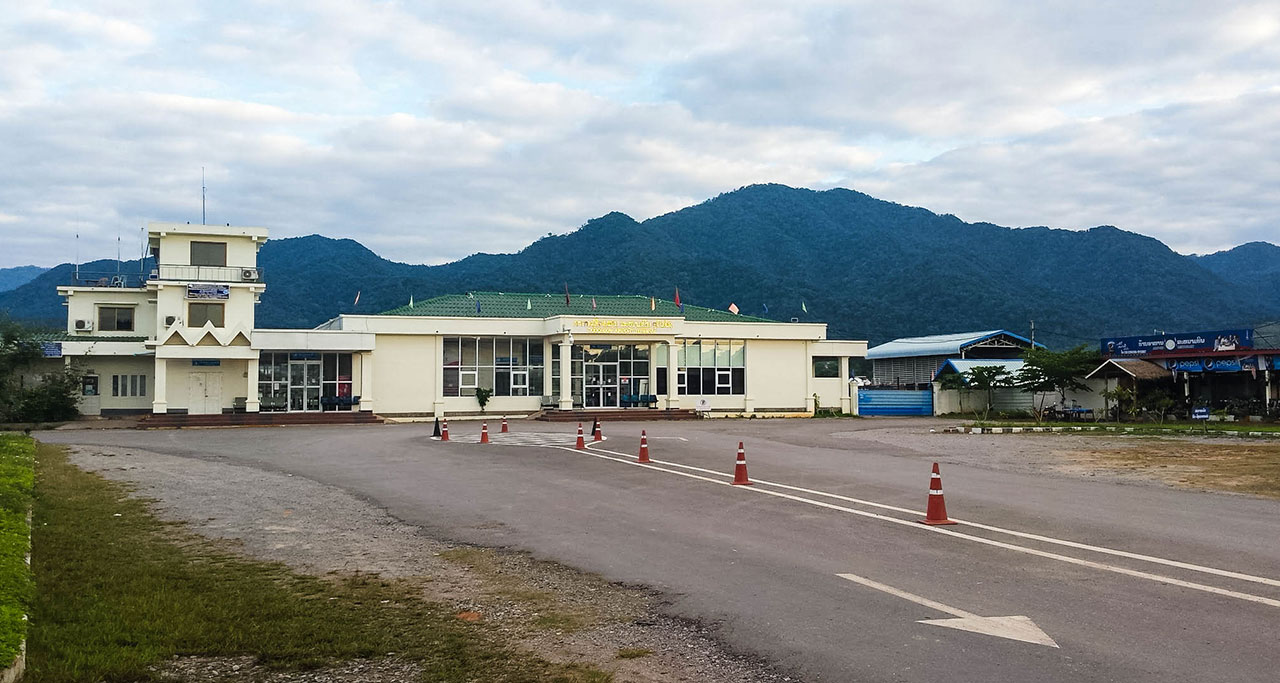
Oudomxay Airport
Phongsali Airport (PCQ)
Located about 7 km from Phongsali town, the northernmost provincial capital in Laos, the airport is a great entry point for off-the-beaten-path explorers, Phongsali is known for its cool mountain climate, trekking routes through ancient tea plantations (home to some of the world’s oldest tea trees), and visits to Akha, Hmong, and Khmu villages.
Sam Neua Airport (NEU)
This airport, situated roughly 5 km outside Sam Neua town, Houaphanh Province, serves as the entry point to the Viengxay Caves, an extensive network of limestone caves that sheltered Pathet Lao leaders during the Indochina War. Other attractions include local weaving villages, dramatic karst landscapes, and vibrant local markets.
When planning flights, it’s important to keep arrival times in mind. For international flights, travelers are advised to arrive at least 2 to 2.5 hours before departure, as immigration procedures can be slow during peak hours. For domestic flights, arriving 1 to 1.5 hours in advance is usually sufficient since airports are small and check-in is quick. Being prepared with the right timing ensures a smoother and stress-free start to your Laos adventure.
Flying to Laos is the first step in starting your adventure, and a little preparation can make the journey stress-free. Here are some practical tips to help you enjoy a smooth flight and easy arrival:
Choose the Right Flight
Flight options to Laos are still limited compared to larger Southeast Asian hubs, so it’s important to check availability early. Depending on your itinerary, you can fly directly into Vientiane, Luang Prabang, Pakse, or Savannakhet from regional cities like Bangkok, Hanoi, or Siem Reap. Booking ahead gives you more flexibility and better prices.
Compare Airlines Before Booking
Different airlines offer different levels of comfort, layovers, and baggage allowances. Popular carriers serving Laos include Lao Airlines, Thai Airways, Vietnam Airlines, and AirAsia. Take the time to compare fares, flight times, and services to choose the best option for your needs and budget.
Use Online Check-In
Whenever possible, check in online before your flight to save time at the airport. This also gives you a better chance of selecting your preferred seat. Make sure your passport, visa (or e-visa), and other travel documents are ready before heading to the airport.
Arrive Early at the Airport
While Laos airports are generally smaller and less crowded, arriving at least 2 hours before international flights (and 1 hour for domestic flights) is recommended. This ensures you have enough time for check-in, security checks, and immigration without stress.
Follow Airline Baggage Rules
Each airline has its own baggage regulations. Check your allowance in advance and pack accordingly to avoid unexpected fees or delays. If you’re planning to bring souvenirs such as textiles, coffee, or Lao whiskey, make sure they fit within the rules.
Check Airport Services Before Use
Laos airports are functional but not as modern as those in Bangkok or Singapore. Services like taxis, SIM card counters, and currency exchange are available, but prices can vary. Always ask about costs before using a service to avoid surprises.

Tips for a Smooth Flight to Laos
Which Airport in Laos Should I Fly Into?
The best airport for your trip depends on your travel style and itinerary:
What’s the Easiest Way to Combine Laos with Neighboring Countries?
Laos is well-connected by air to nearby Southeast Asian hubs. Common international flight routes include:
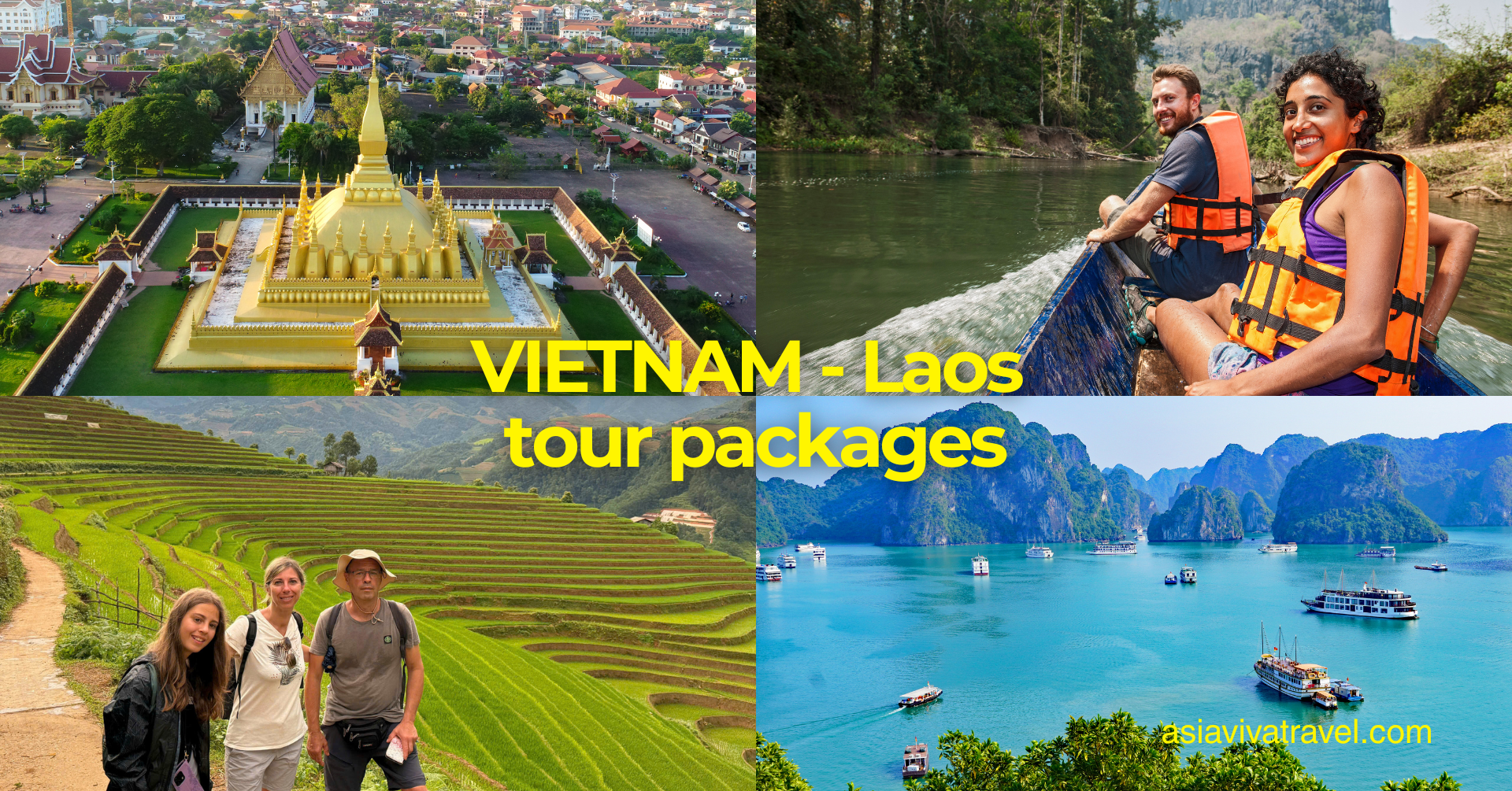
Vietnam-Laos tour
Which travel agency can I book a Vietnam-Laos- Cambodia tour?
If you’re looking for a travel agency to book a Vietnam-Laos-Cambodia tour, Asia Viva Travel is a solid choice.
Airports in Laos may not be massive international hubs, but they are practical, traveler-friendly, and strategically placed for easy access to the country’s highlights. From Luang Prabang’s temples and waterfalls to Pakse’s coffee plantations and waterfalls, each airport serves as a gateway to a different side of Laos.
Whether you’re a first-time visitor flying into Vientiane, a culture lover landing in Luang Prabang, or an adventurer exploring Pakse and the 4,000 Islands, knowing your airport options will help you plan a stress-free trip.

 19/11/2025
19/11/2025The Golden Triangle is one of the most legendary travel destinations in Southeast Asia, known for its history, stunning river landscapes, and multicultural influence

 05/09/2025
05/09/2025Discover the Bolaven Plateau in southern Laos – explore stunning waterfalls, coffee plantations, local markets, and scenic loops with our complete travel guide

 23/08/2025
23/08/2025A true vagabond experience in the Pakbeng Laos river region, where the pace of life slows down on a slow boat trip, exploring peacefu villages and l landscapes

 11/08/2025
11/08/2025From peaceful temples to stunning nature, Laos safe to travel if travellers follow key safety tips. Don’t risk unexpected hassles, travel smart for a relaxing trip!